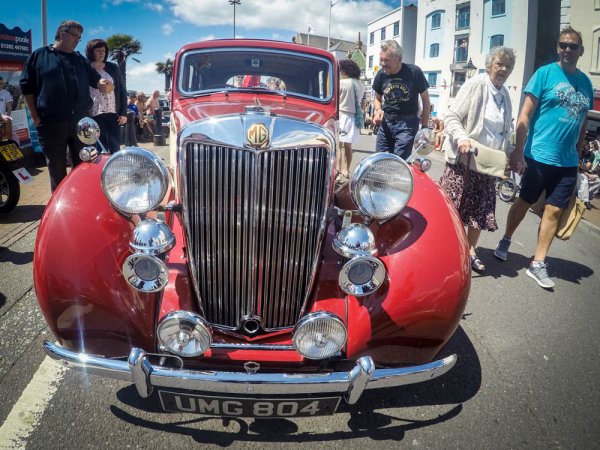- Messages
- 10,600
- Location
- My mother's basement
^^^^^
And remember, the coupe is not a “coop,” it’s a “coo-PAY.”
And remember, the coupe is not a “coop,” it’s a “coo-PAY.”
Last edited:
^^^^^
And remember, it’s not a “coop,” it’s a “coo-PAY.”
These are relatively early cars, and many would find it asinine that they could be considered dependable. Can anyone vouch for any of the models Vitanola mentions here?The flathead six cylinder Chrysler products (Chrysler 70, Windsor, Airstream Six, or Royal, any 1929-52 Dodge, any pre-1952 De Soto, and any 1932-52 Plymouth) are legendarily reliable, and parts are not too difficult to find.
Well (says the man who's current favorite shotgun dates back to Lincoln's presidency), yeah--but. It comes down to what you are going to do with it. Drive around a small town, maybe occasional trips of 30-40 miles? Sure. If I still lived in my home town, I wouldn't hesitate to drive one. There's a guy back home who has been driving a mid-30s Ford since I was in high school. (Probably hasn't put 10,000 miles on it in 30+ years, but it is his only motor vehicle.)He boldly claimed that any car manufactured after 1929 could be a daily driver, and he cited the Model A as an example of a relatively early car that could get the job done.
Well, they're slightly less complex and difficult to work on than a chainsaw. I can vouch for the Dodges (in grade school, a buddy and I returned one to service that had been parked for 20 years). The Plymouths? I know of a few still on the road.These are relatively early cars, and many would find it asinine that they could be considered dependable. Can anyone vouch for any of the models Vitanola mentions here?
Maybe I should have prefaced that I live on the outskirts of a city, and not in the backcountry
My missus named our car Jessica almost from the day it arrived. She explained that like her famous namesake she's a redhead, she has a great body and she's got a cracking pair of hooters. Of all the gizmos & toys that go into modern cars the one that I miss the most is the sensor in the neck of the fuel tank. When our car was new an attendant would fuel it up for you, self service was unheard of. Nowadays it's all self service and as there's no fuel level sensor, the only way that I know that the tank is full is when the petrol splashes over my shoes.My father's generic name for any motorized vehicle was Bessie.

... One would be advised to save one's pennies and buy the best fully restored car that one can find and then drive it. Project cars never serm to work out.
These are relatively early cars, and many would find it asinine that they could be considered dependable. Can anyone vouch for any of the models Vitanola mentions here?
Buy yourself a big cat litter box, the large flat tray type. It sits perfectly under the car, you can see at a glance any sudden leaks, whether it's oil, water or hydraulic fluid and it keeps the drive and garage floor spotless.I'm still running on the original three-speed transmission. As long as you keep it filled with oil and don't mind a bit of drippage on your driveway, it will give you no troubles whatever.
Tell me about it. When I'm ready to buy, clearing garage space will be half the battle.Now I have the garage space for an old car, but it's full of boxed up books, vintage clothes and coats with no closets in which to live, a cat pee destroyed mattress, and the crate from a 1920s Edison Diamond Disc no one wants and I can't bear to send to the landfill.
Having one to drive often is a lifelong dream.
“Come to kindly terms with your ass, for it bears you.”
That’s the epigraph in “How to Keep Your Volkswagen Alive: A Manual of Step-by-Step Procedures for the Compleat Idiot,” first published — by its author, John Muir (no, not the John Muir they name schools after) — in 1969.
That’s among the better advice in that volume — advice largely wasted on me back when that book was still in wide circulation. No, I didn’t treat cars so kindly then as I do now. (There’s a reason many young men’s car insurance premiums exceed what I paid for housing when I was their age. Boys will be, um, boys, even when they’re really getting too old for that sort of behavior.)
Most cars are consigned to the scrapyard long before they would have had their owners taken better care of them. The original owner typically maintains it well, but with each subsequent owner, who paid progressively less (safe to assume in the large majority of cases), the car becomes a little less precious and repairs and maintenance are too long deferred. So the car craps out at 150K instead of 250K, or more.
Whatever the car, but especially the truly old ones, drive it and care for it like you’re the one who will pay for whatever goes wrong with it. Come to kindly terms.